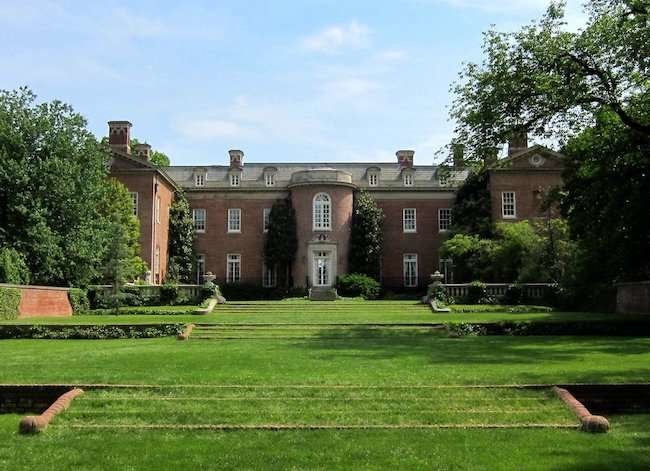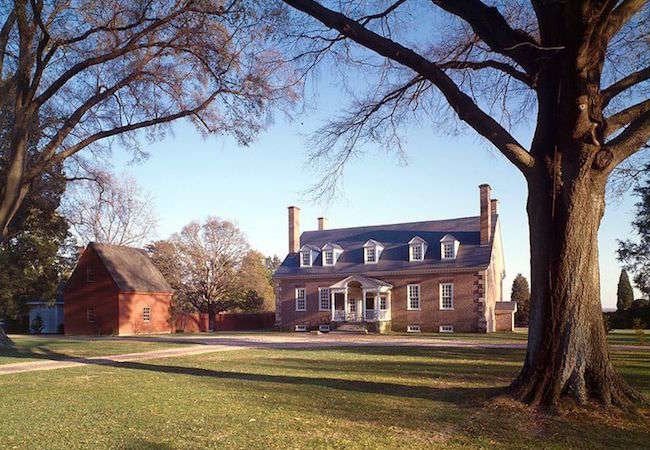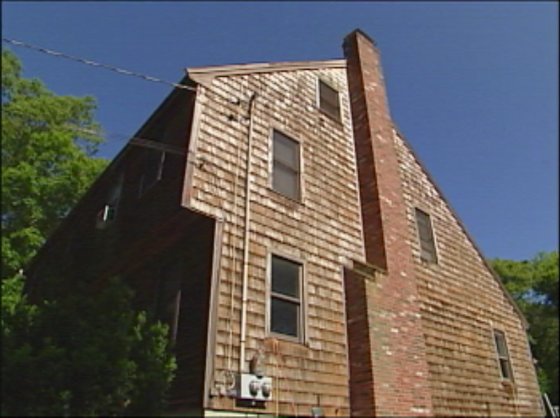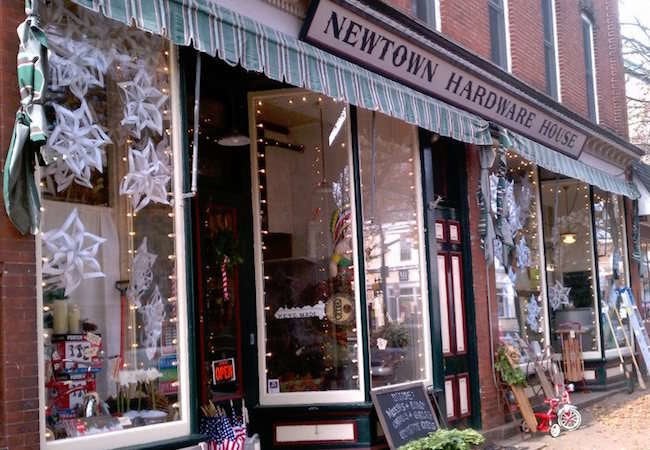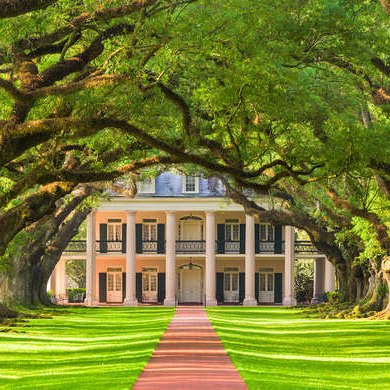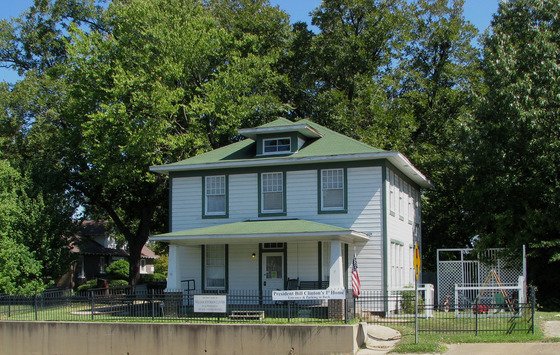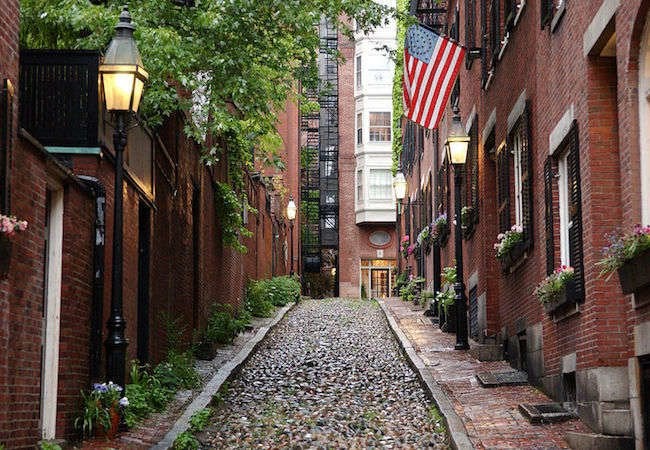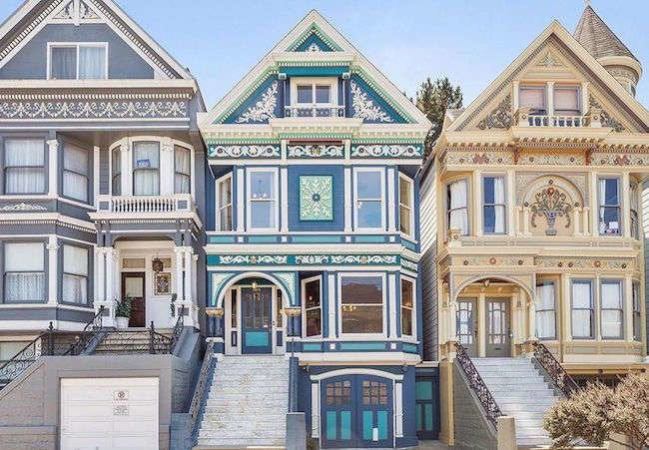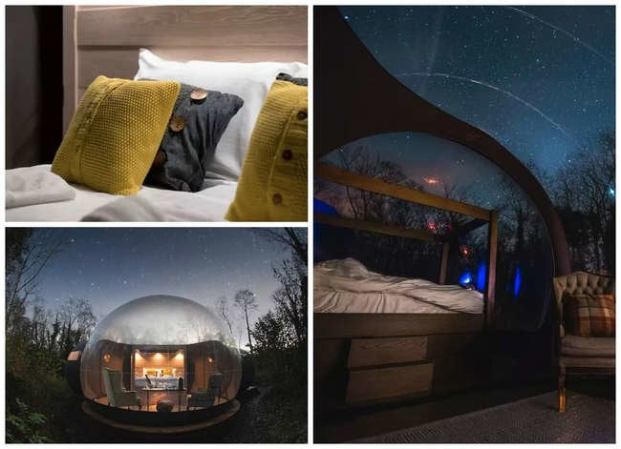We may earn revenue from the products available on this page and participate in affiliate programs. Learn More ›
America the Historical
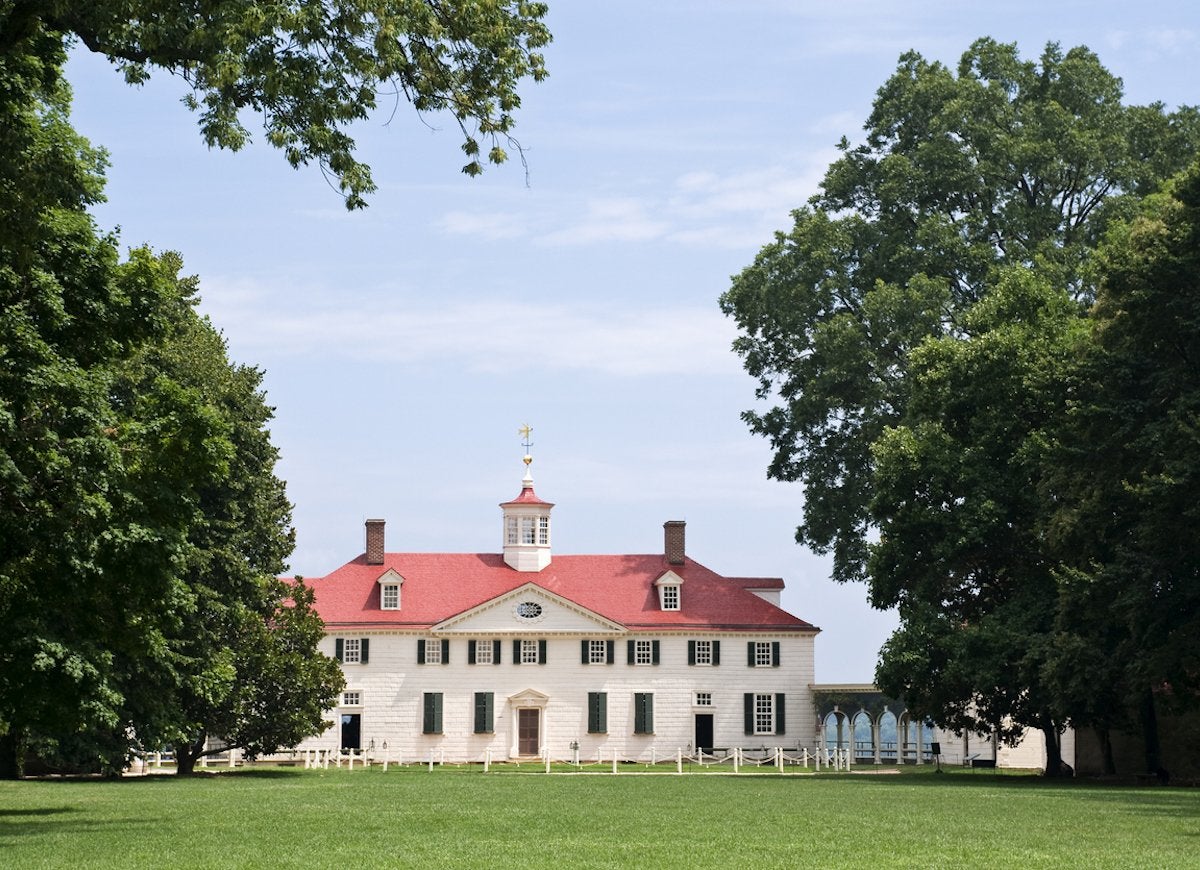
There’s perhaps no better way to experience the past up close than by visiting some of America’s most historic residences. But as you tick off bucket-list destinations like Mount Vernon and Monticello, don’t forget to make stops at less famous estates that once housed distinguished residents. Many of these homes were not only seats of power and hotbeds of political intrigue, but also architecturally important and extremely beautiful. Click through for a collection of the 12 most overlooked political palaces in America.
Vice President’s House in Washington, D.C.
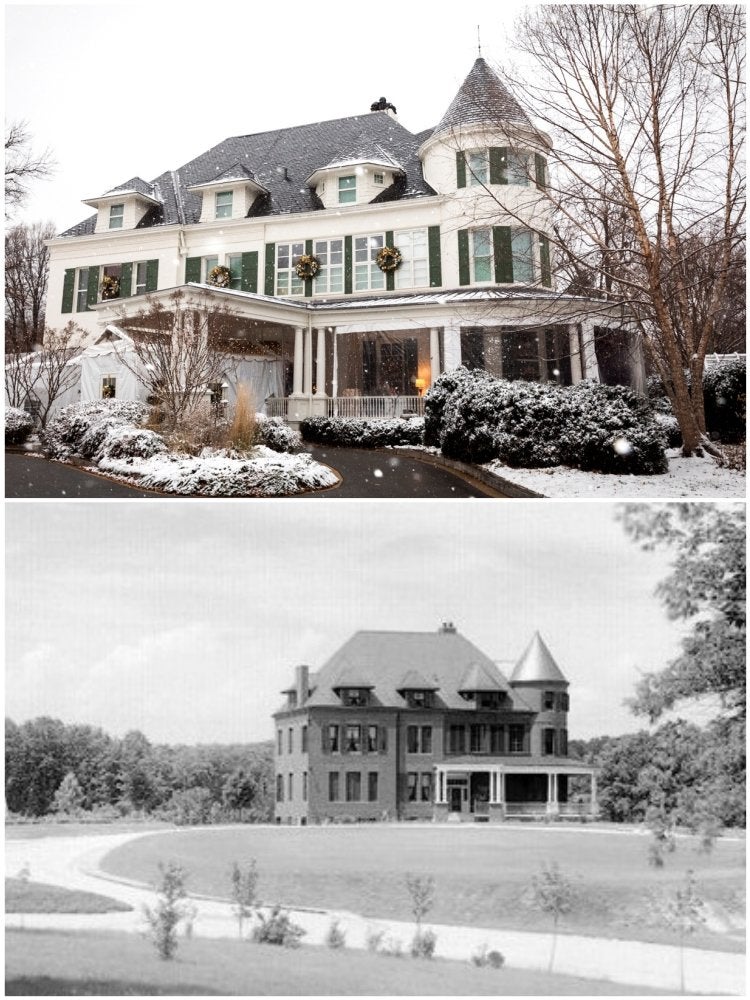
Wikimedia Commons via d. Myles Cullen / The White House and u.s. Naval Observatory Library
Known by its address, Number One Observatory Circle was built in 1893 as the home of the superintendent of the U.S. Naval Observatory. No expense was spared in its construction, which in today’s dollars came to nearly $570,000. The distinguished digs feature an elegant terra-cotta brick exterior, wallpapered interiors, Federal-style furnishings, and an asymmetrical floor plan. The stately structure went on to serve as the residence of the chief of naval operations for more than 50 years until 1974, when it became the official “temporary” residence of the vice president of the United States. In 1977, the family of Walter Mondale became the first full-time residents of the home in its new capacity, and all subsequent vice presidents have followed suit.
Dumbarton House in Washington, D.C.

Dumbarton House
This two-story brick Federal-style estate tucked away in D.C.’s Georgetown neighborhood was constructed at the turn of the 19th century by merchant Samuel Jackson. In 1804, Joseph Nourse, the first Register of the Treasury, purchased the home, which passed through various owners over the next century. The National Society of The Colonial Dames of America scooped up the grand 0.6-acre property in 1928 for use as its headquarters. After a renovation, the residence became a house museum in 1932, on the 200th anniversary of George Washington’s birthday. Today, the house brims with furnishings, paintings, and other decorative items from the early years of the American republic. It is open for visitors from February through December, Tuesday through Sunday, with guided tours on the weekends.
Belmont-Paul Women's Equality National Monument in Washington, D.C.
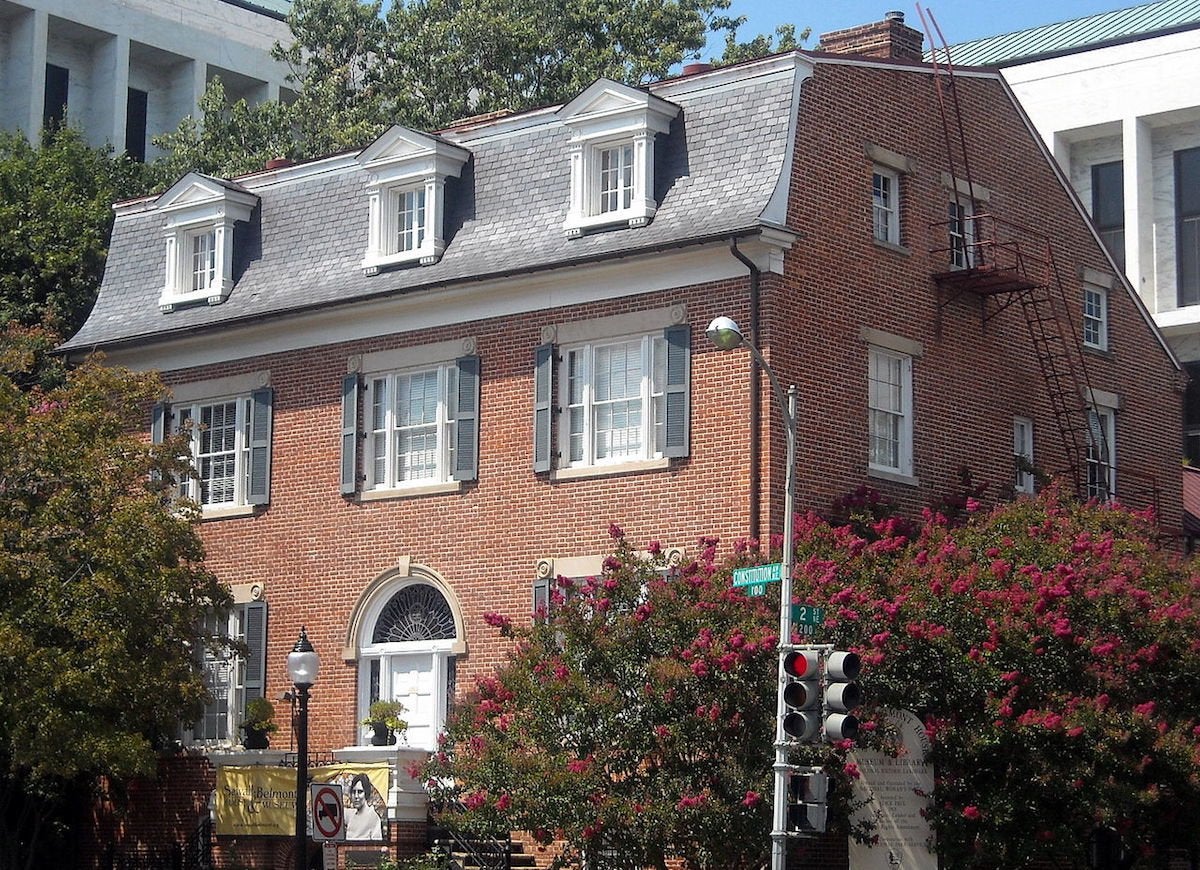
Wikimedia Commons via AgnosticPreachersKid
While it doesn’t get as much foot traffic as some of its Capitol Hill neighbors—namely the United States Capitol and the Supreme Court Building—this Adam Federal-style home was once on the front lines of the fight for women’s equality. Built in 1800 by Robert Sewall, the house partially burned down during the War of 1812 and was repaired in 1820. The estate remained in the Sewall family for more than a century. It was sold to the National Woman’s Party (NWP) in 1929 to serve as its headquarters, and the organization renamed the house in honor of Alva Belmont, who was then the NWP’s president. It became a national monument in 2016, when it was rechristened the Belmont-Paul Women’s Equality National Monument to recognize Alice Paul, an early suffragist and NWP cofounder. Visitors today learn about the history of women’s rights in the United States and view artifacts that include portraits of pioneering suffragists, old suffrage parade banners, and the desk of women’s rights activist Susan B. Anthony. Tours are conducted Wednesday through Sunday.
The Octagon Museum in Washington, D.C.

After President James Madison and his wife, Dolley, were left homeless following the destruction of the White House in 1814, during the War of 1812, the couple moved to this Federal-style home in D.C.’s Foggy Bottom neighborhood for six months. Constructed for Colonel John Tayloe III, a wealthy Virginia planter, the house features elaborate interior finishes and closets on every floor, an innovation at the time. Architecture buffs who visit the house, which was built around 1800, will notice that despite its name, the brick and sandstone structure actually has just six sides. In 1899, the Octagon House became the headquarters of the American Institute of Architects, which still owns the building. It has been extensively renovated in efforts to return the home to its original appearance, and it is open Thursday through Saturday for self-guided visits.
Related: 15 Ways Presidents Made the White House Feel Like Home
Tudor Place Historic House and Garden in Washington, D.C.
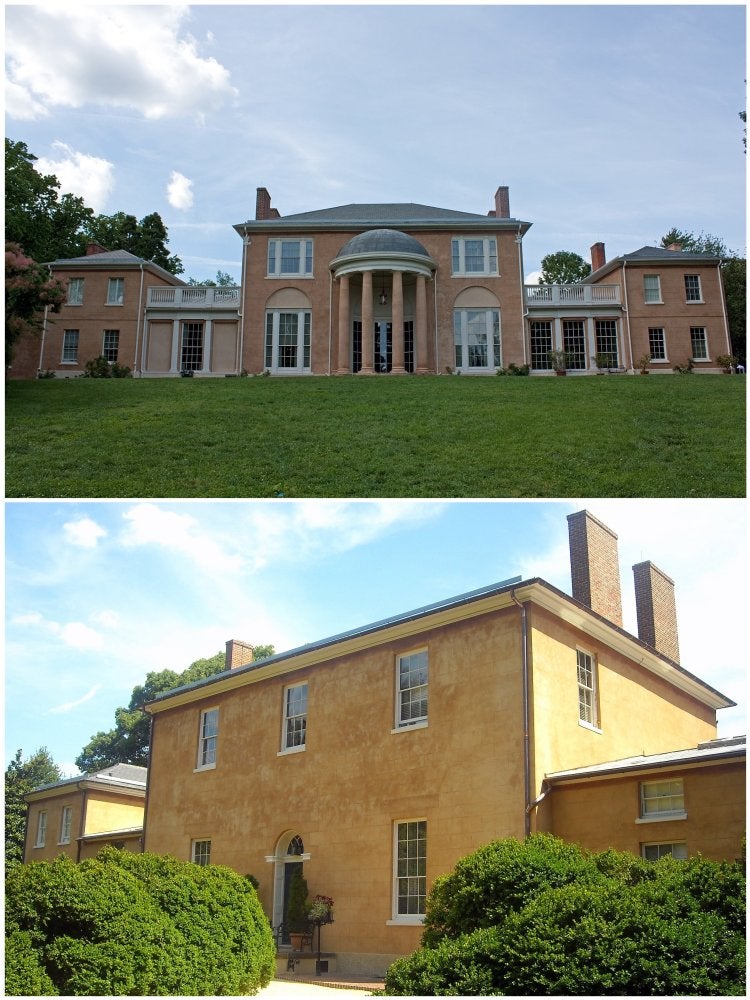
Wikimedia Commons via Wknight94 and AgnosticPreachersKid at English Wikipedia
Where should you go for the best views of the Potomac River? While some might point you to Mount Vernon, George Washington’s estate, locals fond of offbeat landmarks will recommend this Federal-style manse along the river, which was home to Washington’s step-granddaughter, Martha Parke Custis Peter, and her husband, Thomas Peter. Built in 1815, in part from an inheritance from George Washington, Tudor Place spans one full city block and hosts the largest collection of George and Martha Washington’s belongings outside of Mount Vernon. The house museum is open from February through December, Tuesday through Sunday; reservations are recommended on weekends and during peak season.
Carlyle House in Alexandria, Virginia
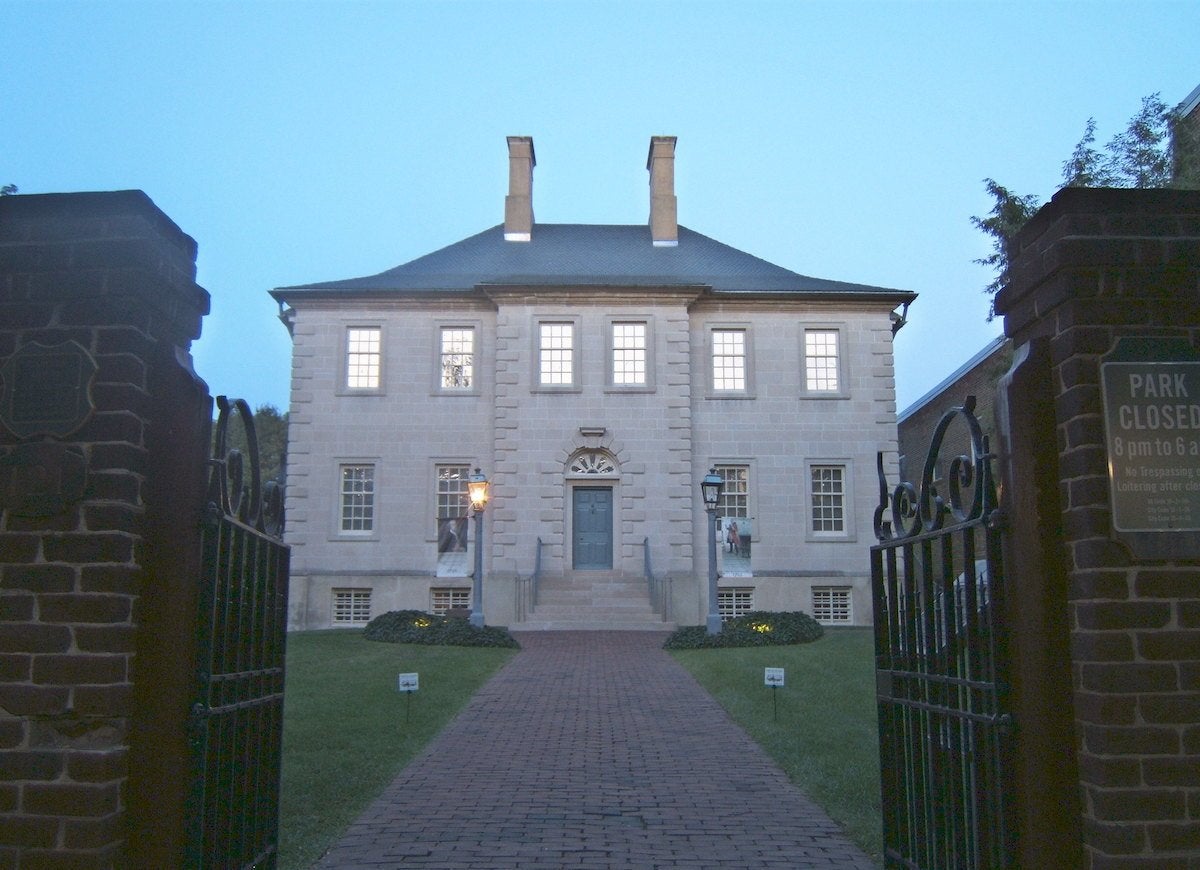
flickr.com via sabreguy29
Carlyle House was built in 1753 by merchant John Carlyle, who hoped that its convenient location by the Potomac River would benefit his business. His home entered the history books in 1755, when it served as the headquarters for British Major-General Edward Braddock during the French and Indian War. It was in the dining room of Carlyle House where the Congress of Alexandria took place, a meeting where the governors of five colonies agreed to what turned out to be an ill-fated attack on French strongholds. Braddock himself died in his attempt to take Fort Duquesne from the French. After the house’s moment of fame, Carlyle continued living there until his death in 1780, and the Palladian Revival-style mansion was held by his descendants until 1827. It housed Union officers during the Civil War, served as a museum during World War I, and eventually fell into disrepair. NOVA parks acquired the house in 1970 and opened it to the public in 1976. At the restored mansion, which is open Tuesday through Sunday, visitors can explore everyday life in pre-Revolutionary America.
Bacon’s Castle in Surry County, Virginia
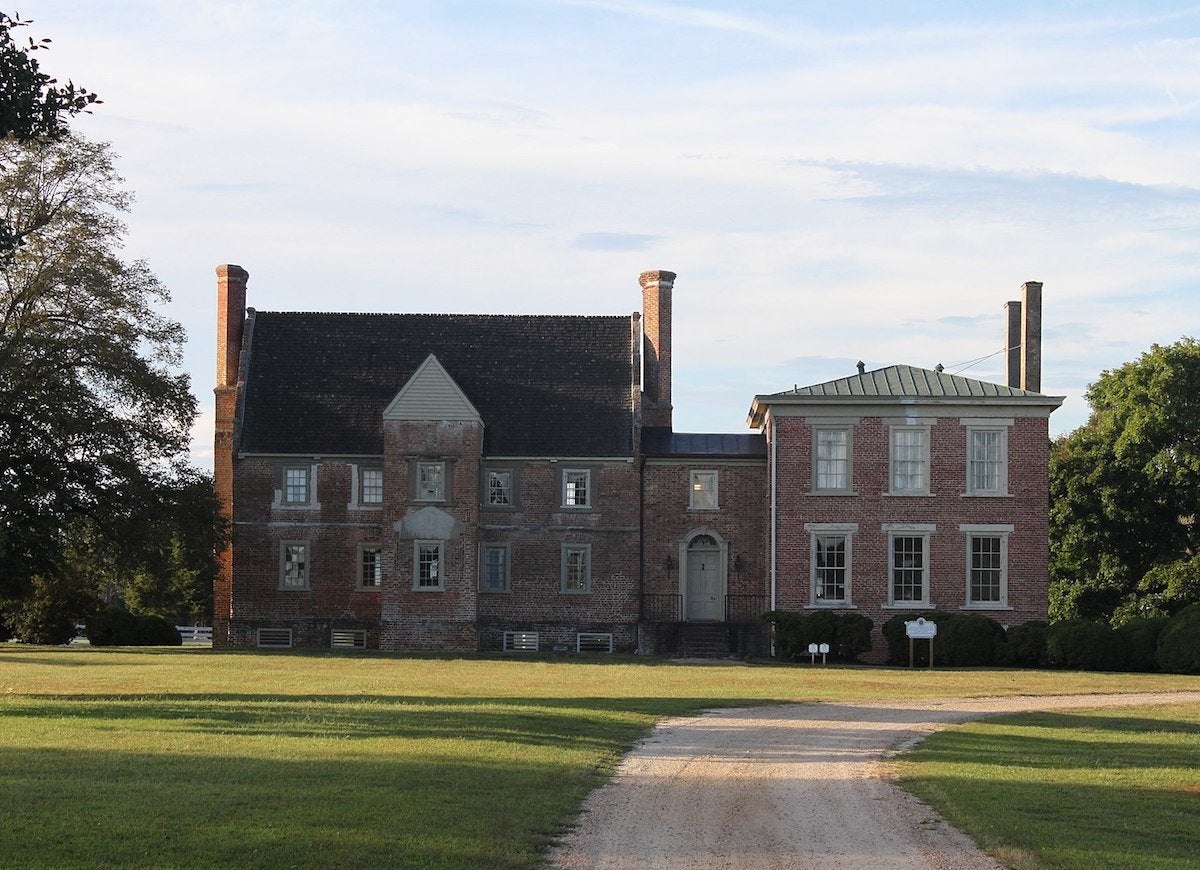
Wikimedia Commons via Natwebb
This Jacobean castle, the oldest documented brick dwelling in the United States, was built in 1665 by wealthy merchant Arthur Allen. Though it is also known as Allen’s Brick House, it’s best known as Bacon’s Castle, because it was occupied as a fort by followers of Nathaniel Bacon during Bacon’s Rebellion in 1676, an uprising against the rule of colonial governor William Berkeley. Although Bacon himself never set foot on the property, its architectural and historical significance led to its acquisition by Preservation Virginia in the 1970s. The house is open to the public in March through December, Friday through Sunday. Don’t miss its 17th-century formal English garden and outbuildings, including former slave quarters, barns, and smokehouses.
Shirley-Eustis House in Boston, Massachusetts
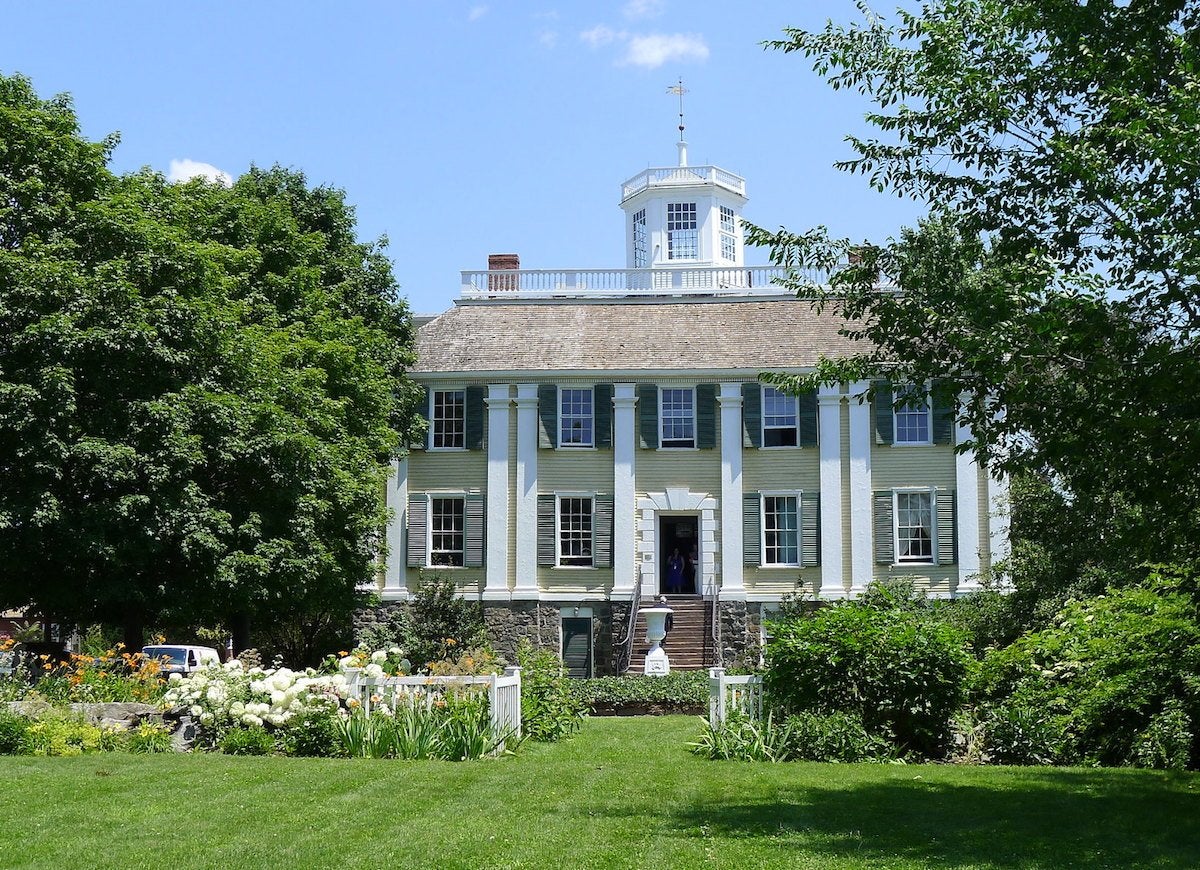
flickr.com via leewrightonflickr
One of only four remaining estates of royal governors, this 0.25-acre Georgian property, completed in 1751, served as the summer home of William Shirley, who served as the royal governor of Massachusetts Bay Province from 1741 to 1749, and again from 1753 to 1756. Shirley’s son-in-law acquired the property, and after his death in 1775, the house changed hands several times until it was purchased in 1819 by Dr. William Eustis, who was President James Madison’s Secretary of War during the early days of the War of 1812. He went on to serve as the first Democratic-Republican governor of Massachusetts, from 1823 to 1825. The well-appointed home, which is surrounded by gardens and an orchard, has been on the National Register of Historic Places since 1960 and has been open to the public since the early 1990s. It welcomes visitors from June through Labor Day, and by appointment during the off-season.
The Pierce-Hichborn House in Boston, Massachusetts
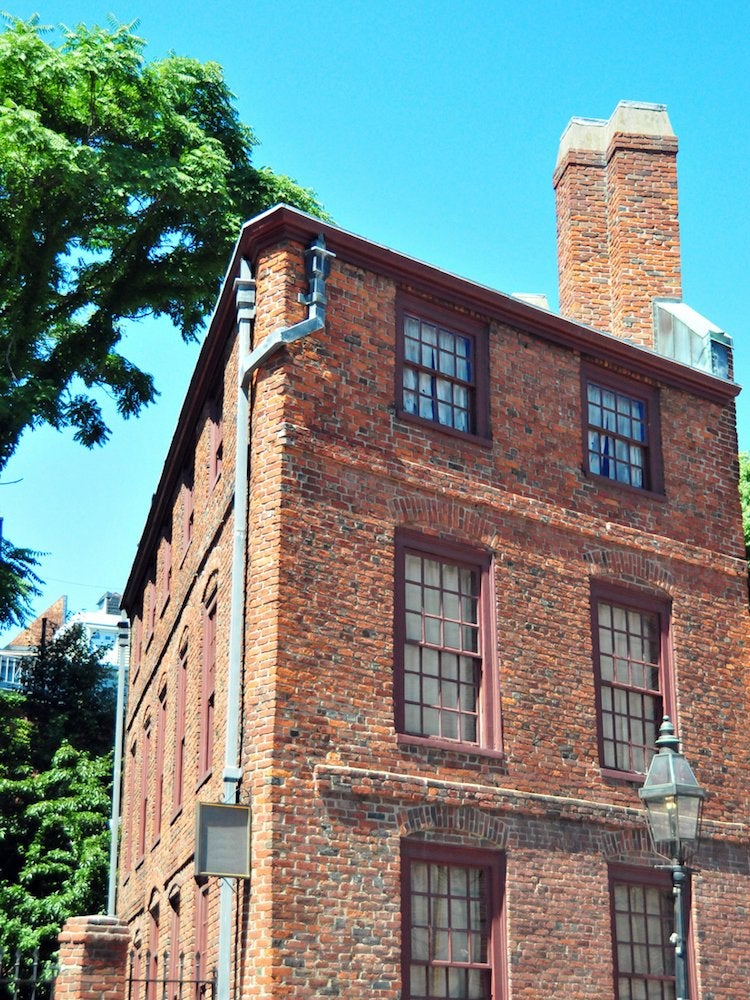
Located steps from the home of Paul Revere, famous for his midnight ride, this less-visited but no less historic abode passed through many owners, including Nathaniel Hichborn, who was one of Revere’s cousins. Built in 1711 by glazier Moses Pierce, the house was probably destroyed in the great fire that same year, and reconstructed. Though it sits on a small urban lot, the three-story brick Georgian has a stately aspect. But by the 1940s, when it was purchased at auction by the Society for the Preservation of New England Antiquities, it had become a tenement. The property was restored and was designated a National Historic Landmark in 1968. Today, it is operated as a museum in conjunction with the neighboring Paul Revere House. Guided tours take visitors through rooms appointed in 18th-century furnishings and decorative pieces.
First Harrison Gray Otis House in Boston, Massachusetts
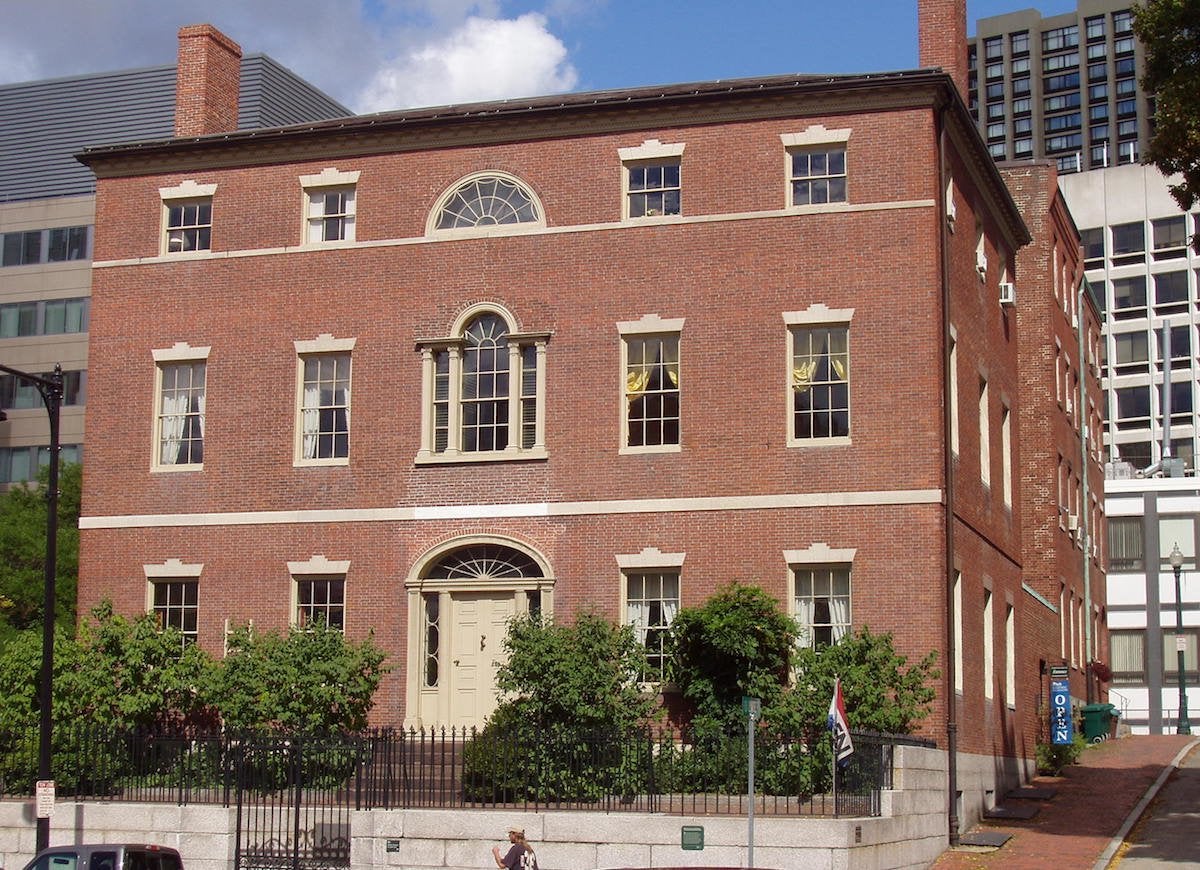
Wikimedia Commons via Daderot
This imposing three-story brick Federal-style home was constructed in Boston’s West End in 1795 to serve as the residence of Harrison Gray Otis, a wealthy businessman, lawyer, and politician who was an important leader of the Federalist Party, the first political party in the country. The generous front facade features a Palladian window above the graceful entrance. Visitors can enjoy a guided tour of the mansion’s meticulously restored interiors from April 1 through November 30, Monday through Sunday.
Josiah Quincy House in Boston, Massachusetts
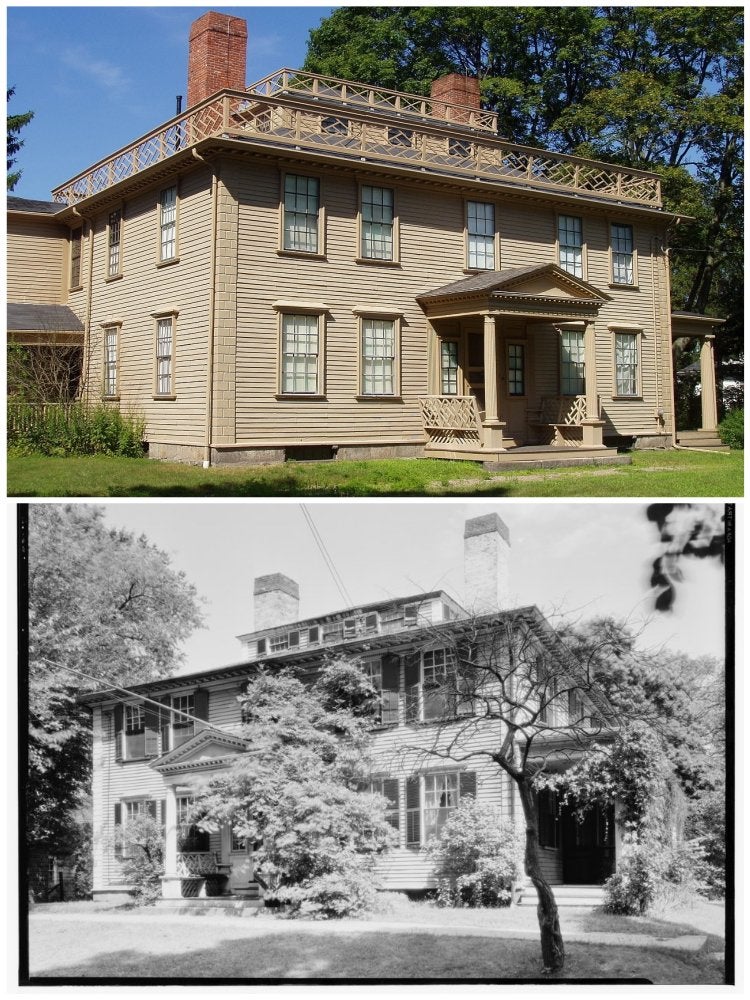
Wikimedia Commons via Daderot and National Park Service
Built in 1770 on a 200-acre farm, this Georgian estate was once home to Boston political royalty, namely Revolutionary War soldier Colonel Josiah Quincy. He was the first of six Josiah Quincys who went on to occupy prominent positions in the city. They count among their number three mayors and a Harvard University president. One of the house’s claims to fame is that during the Revolutionary War, Josiah Quincy, in aid of George Washington, was able to observe the British fleet in the harbor from his attic windows. Visitors to the house today can view a pane of glass with Quincy’s note etched into it: “October 10, 1775 Governor Gage sailed for England with a fair wind.” The house was designated a National Historic Landmark in 1997, and it is now owned by Historic New England, a nonprofit that conducts tours on the first and third Saturdays of each month, from June 1 through October 15.
Powel House in Philadelphia, Pennsylvania
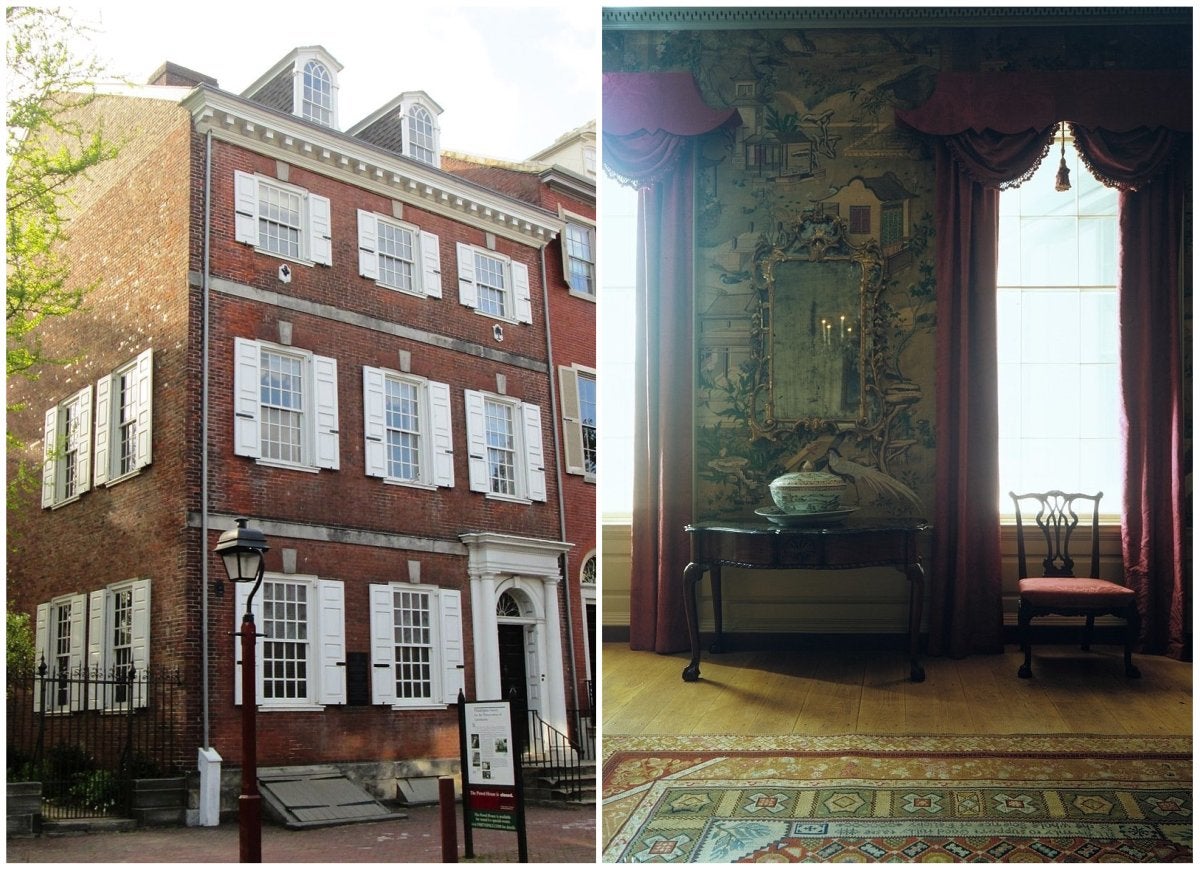
Wikimedia Commons via Beyond My Ken and Metropolitan Museum of Art
This Georgian row house was constructed in 1765 for merchant and shipmaster Charles Stedman, who fell upon hard times before he was even able to move in, and wound up in debtors’ prison. Samuel Powel purchased the home in 1769, and proceeded to redecorate it extensively, creating an elegant interior with ornate plasterwork and woodwork, some of which can be seen in room installations at the Metropolitan Museum of Art and the Philadelphia Museum of Art. Powel was the city’s last mayor under British rule and its first after independence. Given his prominent position, he and his wife entertained lavishly, welcoming to their home a veritable who’s who of Revolutionary Era elite, including Benjamin Franklin and the Marquis de Lafayette. The grand establishment was purchased by the Philadelphia Society for the Preservation of Historic Landmarks in 1931 and carefully restored. It is now a house museum that depicts the lives of the well-heeled during the American Revolution. Guided tours are offered Thursday through Saturday, from April to November, as well as on weekends in March and early December.
Cliveden in Philadelphia, Pennsylvania
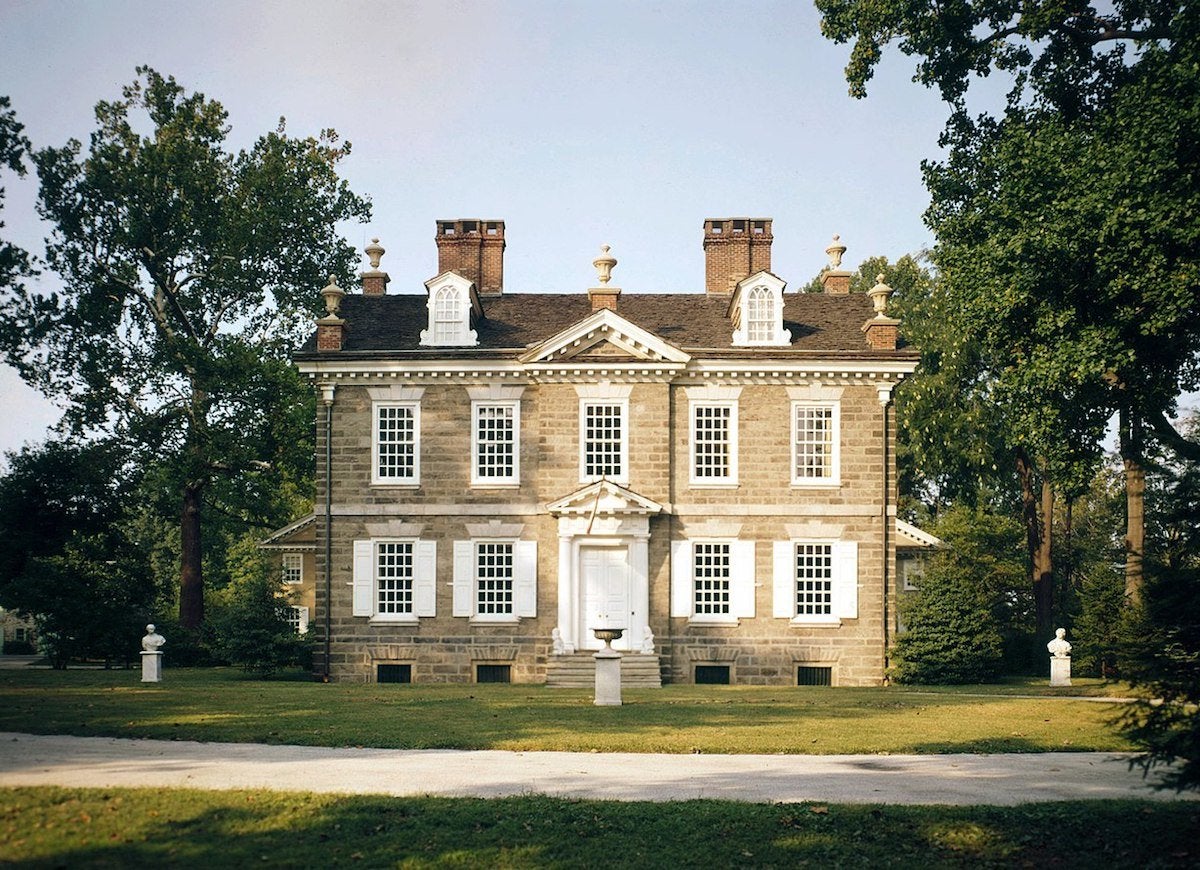
Wikimedia Commons via Library of Congress, Prints & Photographs Division, HABS PA,51-GERM,64-88
While you’d never guess from its staid exterior and bucolic surroundings, this Georgian summer home of Quaker-born legal scholar Benjamin Chew witnessed one of the bloodiest skirmishes of the American Revolutionary War. Cliveden, completed in 1767, was held by British forces during the Battle of Germantown in 1777. The British troops fired on the advancing Continental Army from the relative safety of the thick-walled mansion, forcing the Americans to retreat. Cliveden was designated a National Historic Landmark in 1966 and is open for guided tours from spring through fall.
Related: 25 Places Every American Should Visit at Least Once
